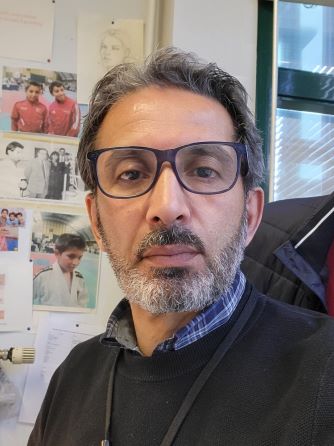← Retour vers le trombinoscope
 Maître de Conférences (HDR)
Maître de Conférences (HDR)Mail :
Tel : 03 22 82 75 27
Fax : 03 22 82 75 60
Nos travaux de recherche portent sur le plan fondamental sur l'application de la méthodologie directe dans la transformation régiosélective de sucres non protégés. C'est une approche environnementale et économique qui tente de minimiser le nombre d'étapes de synthèse des produits cibles à partir de substrats linéaires ou cycliques issus du pool chiral glucidique. La sélectivité de transformation de ces systèmes polyfonctionnels complexes est basée sur la différence de vitesse de réaction des différents types de groupes hydroxyles (primaire, secondaire, anomère et néopentylique). Dans le cadre de cette thématique nous développons en particulier le concept de « Transformation Bidirectionnelle » pour obtenir des systèmes polyhydroxylés bis-électrophiles dérivés d'alditols et d'aldoses linéaires (aldoses dithioacétales.......). Les groupes activateurs utilisés sont de deux types :
i. Linéaires de types sel d'iminium et sel de phosphonium ;
ii. Cycliques de types : ion acétoxonium, sel d'iminium, sulfite, sulfate, thionocarbonate.......
En utilisant cette méthodologie nous ciblons dans nos orientations actuelles des cibles diverses pour des applications biologiques : Inhibiteurs de glycosidases et de glycosyl transférases, des anti-oxydants ainsi que des ligands linéaires et macrocycliques. Les pathologies visées sont le diabète type-II, le cancer, le SIDA et le design des molécules est lié aux différents mécanismes dont le blocage du phénomène de reconnaissance moléculaire, le piégeage de radicaux libres (antioxydants glucidiques) ou des interaction avec l'ADN de l'agent pathogène.
New Selective Inhibitors of α-Glucosidase for the Treatment of Type 2 Diabetes Mellitus |
Synthesis, characterization and in vivo antitumor effect of new α,β-unsaturated-2,5-disubstituted-1,3,4-oxadiazoles |
Heteroglycoclusters through Unprecedented Orthogonal Chemistry Based on N-Alkylation of N-Acylhydrazone |
Low-Valent Calix[4]arene Glycoconjugates Based on Hydroxamic Acid Bearing Linkers as Potent Inhibitors in a Model of Ebola Virus Cis-Infection and HCMV-gB-Recombinant Glycoprotein Interaction with MDDC Cells by Blocking DC-SIGN |
Development of C-type lectin-oriented surfaces for high avidity glycoconjugates: towards mimicking multivalent interactions on the cell surface |
Development Of C-Type Lectin Oriented Surfaces For High Avidity Glycoconjugates: Towards Mimicking Multivalent Interactions On The Cell Surface |
Glycocluster Tetrahydroxamic Acids Exhibiting Unprecedented Inhibition of Pseudomonas aeruginosa Biofilms |
Uncommon Strong Inhibition of α-Glucosidase by Multivalent Glycoclusters built on Cyclodextrins Scaffolds |
Unprecedented thiacalixarene fucoclusters strong inhibitors of Ebola cis-cell infection and HCMV-gB glycopro-tein/DC-SIGN C-type lectin interaction |
Alditol thiacrowns via a ring-closing metathesis of carbohydrate-derived α,ω-dithioallylethers |
Concise synthesis of C-1-cyano-iminosugars via a new Staudinger/aza Wittig/Strecker multicomponent reaction strategy |
Synthesis of Unsymmetrical Thioethers Using an Uncommon Base-Triggered 1,5-Thiol Transfer Reaction of 1-Bromo-2-alkylthiolcarbonates |